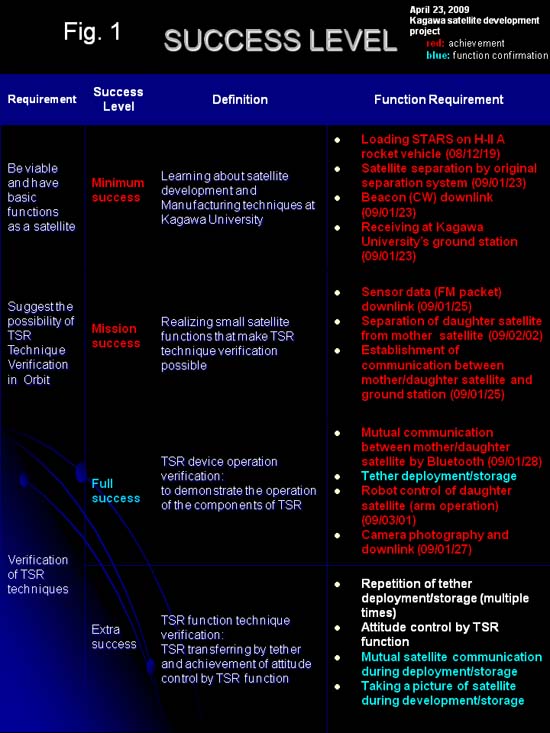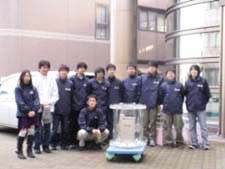Report on Current Operational Status of Small Satellite "KUKAI"("STARS")
"STARS" is a technical name that stands for Space Tethered Autonomous Robotic Satellite and consists of a mother satellite (called KU) and a daughter satellite (called KAI), and we now call it "KUKAI" as a nickname.
"KUKAI" comes from the name of a famous Buddhist priest born in Kagawa Prefecture in 774 B.C. By the way, in Japanese "KU" means "sky" and "KAI" means "sea."
We finished initial checks on KUKAI about one week after the successful launch on January 23, 2009, and then on February 2 we tried to separate the mother satellite and daughter satellite, and conducted a tether deployment experiment.
We successfully implemented the separation, but failed to conduct the tether deployment experiment because the deployment system malfunctioned due to poor communication with the ground station.
After that, we successfully carried out maintenance on the ground station facilities and resolved the problem caused by the malfunction.
And then from the end of February after resolving the problem, we carried out function confirmation of tether deployment and robot control.
During that time, we also expanded the tether from a few centimeters to tens of centimeters and carried out a photographical confirmation of a camera onboard the daughter satellite for taking a picture of the mother satellite.
We have currently, however, put off the tether deployment due to the mother satellite being in an instable condition and we are continuing to monitor the situation of the satellite KUKAI.
The level of achievement of our missions is shown in Fig. 1.

Fig 1: KUKAI Success Level
| Kagawa University | |
|---|---|
|
|
|
| Satellite name: | STARS (Space Tethered Autonomous Robotic Satellite) |
| Nickname: | KUKAI |
| Size: | 16 cm ?? 16 cm ?? 40 cm (when the daughter satellite is docked with the mother) |
| Mass: | Mother satellite 4.2 kg, daughter satellite 3.8 kg |
| Attitude control: | Two magnetic torquers on each satellite |
| Main purpose: | To verify the technologies of a tethered space robot and deliver photos of an orbiting satellite to all over the world |
| Mission: |
|


